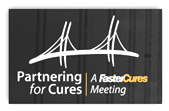HealthVault and Amalga are very commonly used together with Microsoft solutions and the first time this was introduced on a large scale was at Scripps in San Diego and Steve Shihadeh from Microsoft and I had nice chat about it. With using HealthVault this captures the ability to analyze patient provided data and Amalga will de-identify all the relevant personal  information.
information.
Steve Shihadeh, VP Microsoft Health Solutions Group – The Amalga Software Solution for Aggregating Hospital Information (Interview)
Over the at Life Sciences side Amalga and other solutions from Microsoft also come into play with working with Microsoft and other technologies all gathered together in the sandboxes. It’s about a year old but you can read further on that topic below relative to the science side of Microsoft and healthcare. 
A Deep Dive into Microsoft Life Sciences Today and in the Future – Interview with Michael Naimoli
Amalga has many current hospitals and healthcare groups across the US utilizing the powerful data aggregating software and it’s very user friendly and is connecting hospitals together to share patient records in the ER. BD
This week at the Partnering for Cures conference in NYC, the National Cancer  Institute (NCI) and Microsoft presented a prototype which showcases the potential for technology to accelerate cancer research and improve clinical care. It is hoped that the prototype can help the more than 9 million Americans with cancer who are not currently a part of formalized research help future generations get to more effective treatments more quickly.
Institute (NCI) and Microsoft presented a prototype which showcases the potential for technology to accelerate cancer research and improve clinical care. It is hoped that the prototype can help the more than 9 million Americans with cancer who are not currently a part of formalized research help future generations get to more effective treatments more quickly.
The prototype uses Microsoft HealthVault and the Patient Outcomes Data Service (PODS) created by NIC to collect provider and patient-generated data on cancer diagnoses, treatments and outcomes. This could include data from those 9 million people who are not currently represented widely in research.
Using Microsoft Amalga, this data can be made anonymous and aggregated with similar data available in research databases to give a more comprehensive view and enable a more complete analysis of cancer treatment efficacy.
Providers and patients can not only contribute their own information to a more  effective treatments, but can view trended data from across similar patient populations, enabling shared decision-making around diagnoses and treatment plans. This connected approach could also be applied to other disease areas like Parkinson’s, Multiple Sclerosis, etc., creating closer connections and valuable feedback loops across providers, patients and researchers.
effective treatments, but can view trended data from across similar patient populations, enabling shared decision-making around diagnoses and treatment plans. This connected approach could also be applied to other disease areas like Parkinson’s, Multiple Sclerosis, etc., creating closer connections and valuable feedback loops across providers, patients and researchers.
If you want to sign up for a HealthVault PHR for your own use, there's always a link here at the Medical Quack and additional information on PHRs with over 300 posts with all kinds of information with a lot of HealthVault coverage.



0 comments :
Post a Comment